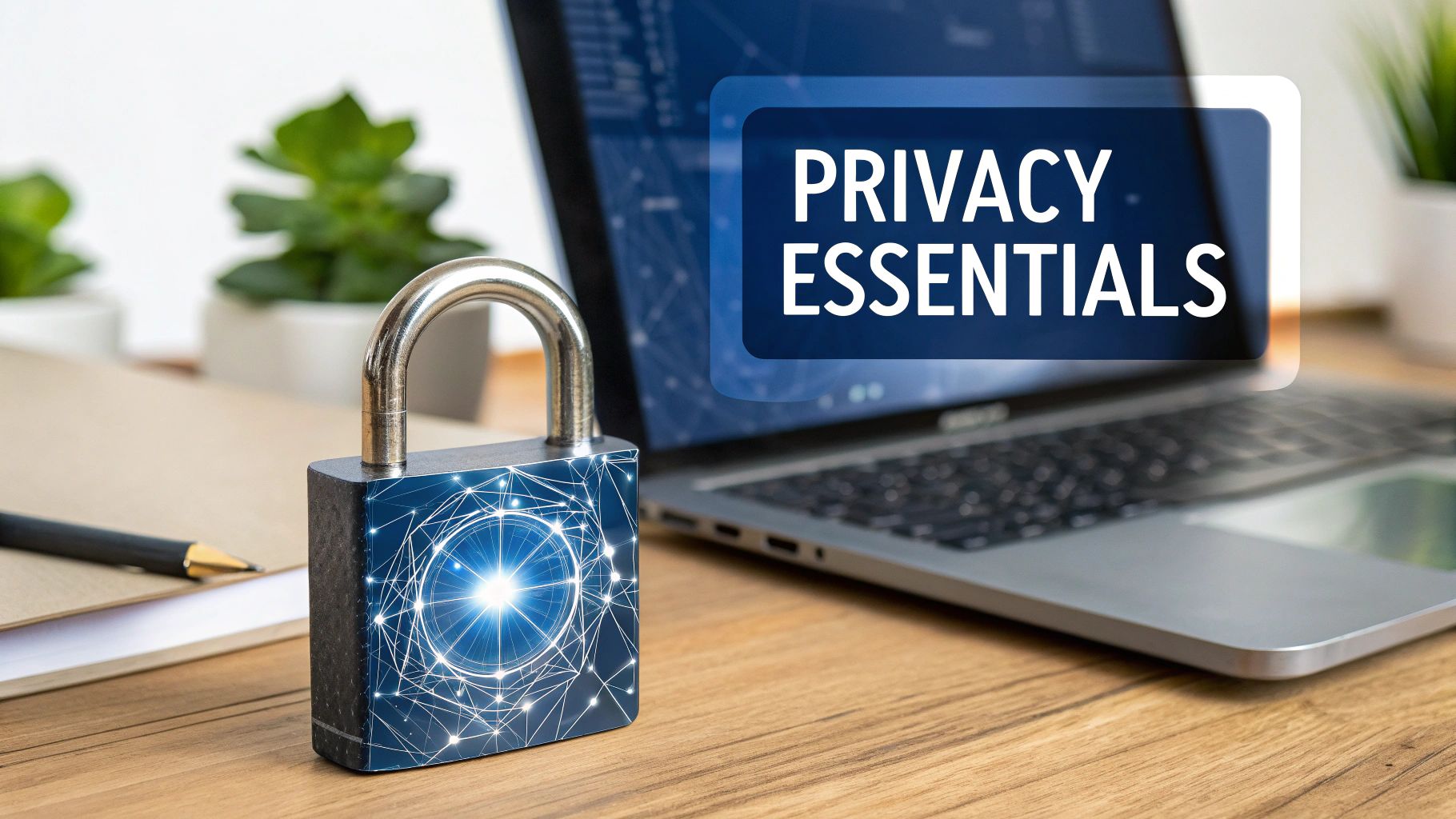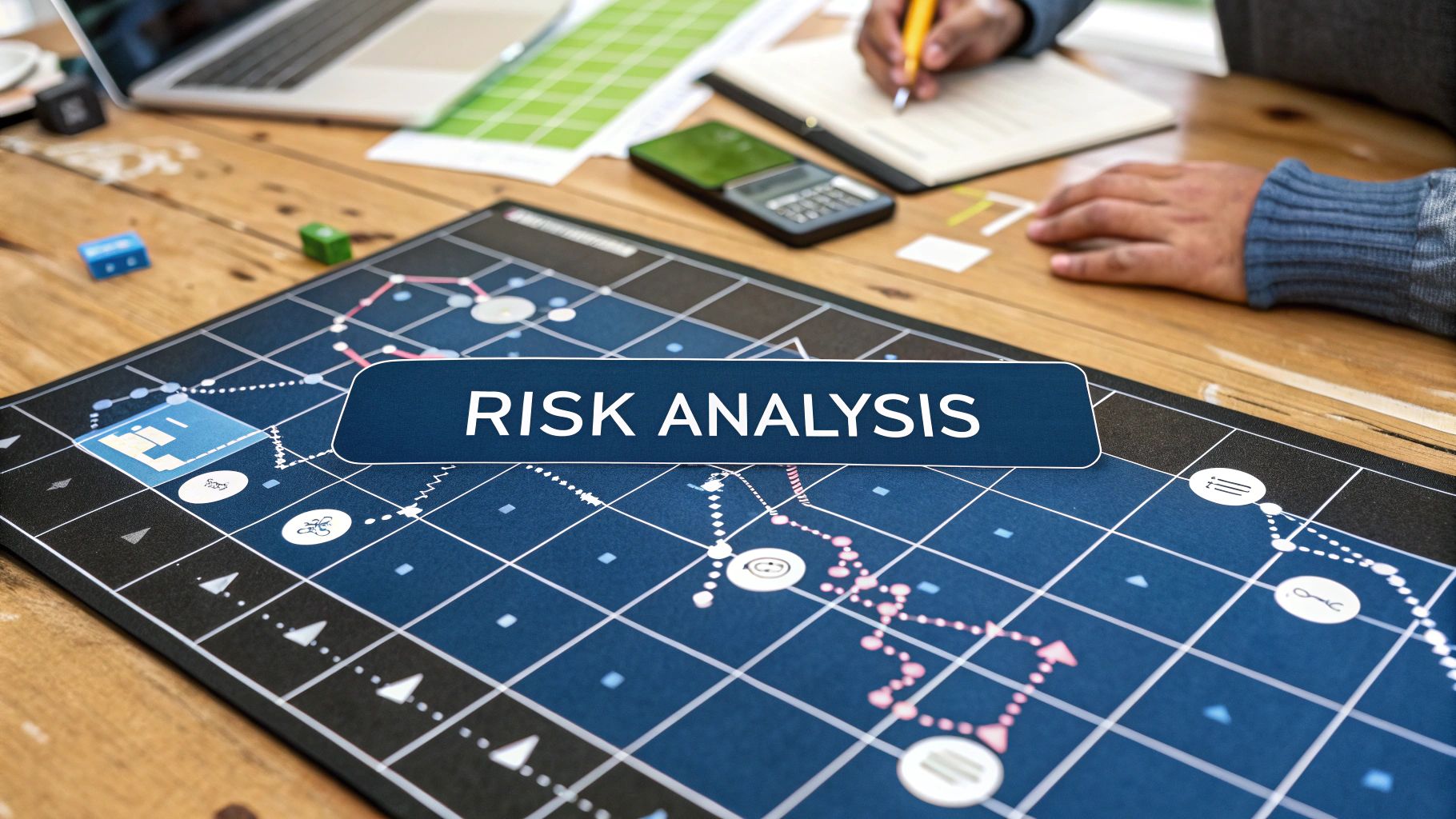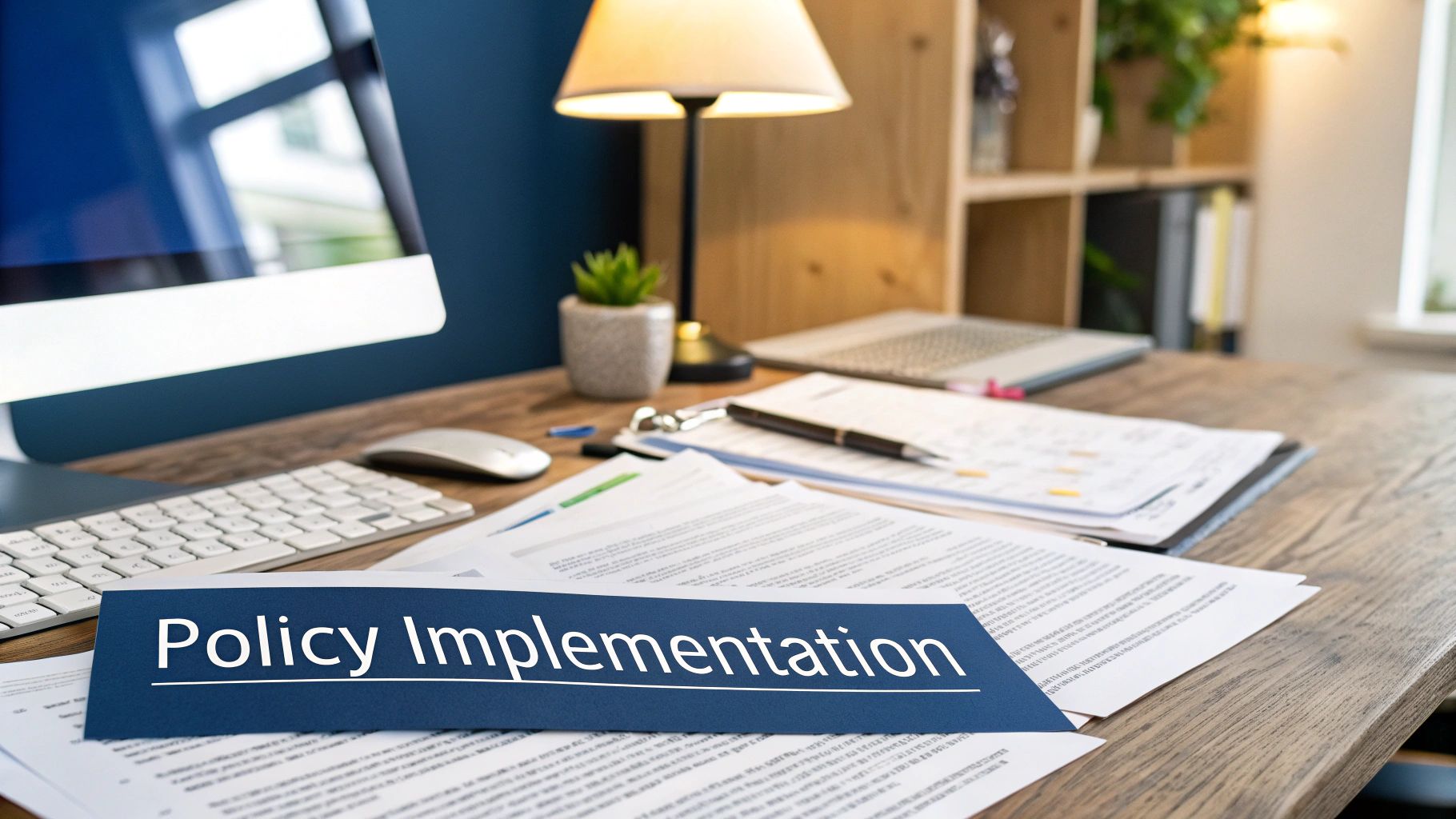Data Privacy Compliance Framework for Secure Data
The Evolution of Privacy Regulations: What You Need to Know
Data privacy has become a critical aspect of business operations. This shift is due to growing public awareness surrounding data vulnerabilities and the introduction of landmark regulations that have redefined how businesses handle data. Understanding this evolution is essential for developing a comprehensive data privacy compliance framework.
Early privacy regulations tended to be fragmented, addressing specific data incidents rather than setting proactive safeguards. However, as technology evolved and data collection practices expanded, the need for stronger, more comprehensive regulations became clear. This led to the development of core privacy principles like data minimization and purpose limitation, which form the basis of today's stricter regulations.
The implementation of the General Data Protection Regulation (GDPR) in 2016 marked a major turning point in data privacy compliance. The GDPR introduced seven key principles for businesses processing EU consumer data: lawfulness, fairness, and transparency; purpose limitation; data minimization; accuracy; storage limitation; integrity and confidentiality; and accountability. By 2018, Fortune Global 500 companies had invested an estimated $7.8 billion in GDPR compliance preparations. Even with this investment, only 25% of surveyed companies reported being able to meet the GDPR's 72-hour data breach reporting requirement. The GDPR's impact is global, influencing over 160 privacy laws enacted worldwide by 2024. Learn more about the history of compliance on the Omada Identity blog.

Key Regulatory Milestones: A Timeline
The development of modern data privacy regulations has been shaped by several key events, highlighting a growing global emphasis on individual data rights and corporate accountability.
- Early Data Protection Laws (1970s-1990s): This era witnessed the emergence of initial data protection laws, primarily focused on giving individuals control over their personal information.
- HIPAA (1996): The Health Insurance Portability and Accountability Act (HIPAA) established specific protections for health information in the United States.
- GDPR (2016): The GDPR established a new global standard for data protection, impacting organizations worldwide.
- CCPA (2018): The California Consumer Privacy Act (CCPA) significantly expanded data rights for residents of California.
The Impact on Organizations
These regulatory changes have profoundly impacted how organizations manage their operations, requiring them to re-evaluate data collection, storage, and processing practices.
- Increased Accountability: Organizations are now directly responsible for safeguarding personal data.
- Enhanced Transparency: Regulations demand clear and open communication regarding data collection and usage practices.
- Focus on Data Security: Companies must invest in robust security measures to mitigate the risk of data breaches.
- Global Compliance Challenges: The diverse range of regulations across jurisdictions presents complex compliance challenges for multinational organizations.
The ongoing evolution of data privacy regulations requires organizations to maintain a flexible and proactive approach to compliance. Developing a strong data privacy compliance framework is not just a legal necessity; it is crucial for maintaining customer trust and achieving long-term business success.
Essential Building Blocks of Effective Privacy Frameworks

A robust data privacy compliance framework is more than just a checklist; it's the foundation of responsible data handling. It provides a structured approach to navigating the complexities of data protection, ensuring organizations meet their legal obligations and maintain customer trust. This section explores the essential components of a successful data privacy compliance framework.
Accountability and Ownership
Establishing clear lines of accountability is paramount. This involves defining roles and responsibilities for data protection and designating an individual or team to oversee compliance efforts. This designated entity becomes the driving force behind the framework's implementation and ongoing maintenance.
Appointing a Data Protection Officer (DPO), for example, can centralize responsibility and provide a point of contact for all privacy-related matters. Accountability extends beyond a single individual, however. It requires fostering a culture of data privacy throughout the organization.
This means educating all employees on their roles in protecting data and providing them with the resources they need to comply with the framework. This shared responsibility fosters a sense of ownership and minimizes the risk of breaches due to negligence.
Comprehensive Policies and Procedures
Clear and comprehensive policies are another cornerstone of a strong framework. These policies outline the organization's approach to data collection, storage, processing, and sharing. They provide specific guidelines on how data should be handled at each stage of its lifecycle.
A data retention policy, for instance, should define how long data is kept and when it can be safely deleted. Consistent procedures based on these policies standardize data handling practices, reducing inconsistencies that can lead to compliance issues. These policies and procedures translate the framework's principles into actionable steps. Learn more in our article about how to master compliance management solutions.
Ongoing Monitoring and Review
A data privacy compliance framework isn't static. It requires ongoing monitoring and review to remain effective. Regular audits and assessments help identify potential vulnerabilities and areas for improvement, ensuring the framework stays relevant amidst evolving threats and changing regulations.
Regular review also allows the framework to adapt to the organization's evolving needs, accommodating new data processing activities or technological advancements. This iterative process promotes continuous improvement and reinforces the organization's commitment to data privacy.
Integrated Technology Solutions
Integrating appropriate technology is crucial for automating key compliance processes. Solutions like data loss prevention (DLP) tools and encryption software offer practical safeguards against unauthorized access and data breaches. These technologies enhance security and reduce the manual effort required for compliance, making the framework more sustainable.
Selecting the right technologies involves careful consideration of the organization's specific needs and the types of data being processed. This strategic approach ensures that the technology supports the framework's objectives without unnecessary complexity. For example, organizations handling sensitive medical data might prioritize tools with robust encryption and access control features.
The following table summarizes the key components of a robust data privacy framework:
Essential Components of a Data Privacy Framework
A comprehensive breakdown of the core elements required for an effective data privacy compliance framework, including their purpose and implementation considerations.
| Component | Purpose | Implementation Considerations |
|---|---|---|
| Accountability & Ownership | Assigning responsibility for data protection and fostering a culture of data privacy. | Designate a DPO, establish clear roles and responsibilities, provide employee training. |
| Policies & Procedures | Outlining the organization's approach to data handling and providing specific guidelines. | Develop comprehensive data policies (e.g., retention, access, breach notification), create standardized procedures, ensure alignment with legal requirements. |
| Ongoing Monitoring & Review | Identifying vulnerabilities and areas for improvement, adapting to changing needs and regulations. | Conduct regular audits and assessments, review and update policies and procedures, track key metrics. |
| Integrated Technology Solutions | Automating compliance processes and enhancing security. | Implement DLP tools, encryption software, access control systems, consider organizational needs and data types when selecting technologies. |
By incorporating these core elements, organizations can build a robust and effective data privacy framework that protects sensitive information, maintains customer trust, and ensures compliance with evolving regulations.
Industry-Specific Challenges: Customizing Your Approach

Building a data privacy compliance framework requires a deep understanding of the regulations. It also requires recognizing the unique challenges each industry faces. A one-size-fits-all approach simply won't work. What's suitable for a tech startup might not be appropriate for a healthcare provider. This means tailoring your framework to address industry-specific regulatory demands.
Healthcare: Protecting Patient Confidentiality
Healthcare providers and insurers handle vast quantities of protected health information (PHI). This makes data security absolutely critical. This sector faces strict regulations like the Health Insurance Portability and Accountability Act (HIPAA), which mandates specific security measures and procedures for handling PHI.
HIPAA, enacted in 1996, is a foundational U.S. law for protecting health information. It sets standards for safeguarding medical records and other personal health information. HIPAA compliance is essential, and violations can lead to significant financial penalties. The act streamlines healthcare information flow, ensuring patient data security and authorized access.
Despite its importance, HIPAA's scope is narrower than broader laws like the General Data Protection Regulation (GDPR). For further exploration of data privacy history and regulations, check out this University of Michigan resource. Additionally, healthcare organizations must navigate the complexities of data sharing between providers while maintaining patient privacy. A robust data privacy compliance framework in healthcare prioritizes data encryption, access control, and audit trails.
Financial Services: Securing Financial Transactions
Financial institutions manage highly sensitive financial data. This includes transaction details and customer account information. These organizations face regulations like the Gramm-Leach-Bliley Act (GLBA), which requires the protection of nonpublic personal information (NPI). This necessitates strong security measures to prevent fraud and data breaches.
A data privacy compliance framework in financial services should focus on data integrity, secure storage, and incident response planning. Furthermore, these institutions must carefully balance the need for data analysis and marketing with customer privacy expectations. For practical guidance on data protection, see How to master data protection assessments.
Education: Safeguarding Student Data
Educational institutions collect diverse data about students. This data includes academic records, disciplinary information, and even health data. The Family Educational Rights and Privacy Act (FERPA) in the US protects the privacy of student educational records. This requires strict access controls and obtaining parental consent.
A data privacy compliance framework in education needs to concentrate on data minimization, secure data storage, and transparent data sharing practices. Educational institutions must carefully manage data access for staff, students, and parents while adhering to FERPA regulations.
Technology: Navigating the Data Deluge
Technology companies frequently collect and process large datasets for various purposes. These include product development, targeted advertising, and research. These organizations are subject to regulations like the GDPR and the California Consumer Privacy Act (CCPA), which give individuals substantial control over their personal data. This involves implementing robust consent management and data subject access request processes.
A successful data privacy compliance framework in technology emphasizes transparency, data portability, and the right to be forgotten. These companies must be prepared to respond to data subject requests and provide clear explanations about their data practices. This often necessitates proactive measures to address potential privacy risks during the product development lifecycle.
Technology Solutions That Actually Deliver Results

Implementing a robust data privacy compliance framework requires the right tools. Technology plays a vital role in automating tasks, improving accuracy, and reducing the overall compliance burden. With numerous solutions available, choosing wisely is paramount.
Identifying Your Needs
Understanding your specific needs is the first step. What are your biggest data privacy challenges? Do you struggle with data discovery, consent management, or data subject access requests? The ideal technology should address these pain points and integrate seamlessly with your existing workflows.
For instance, robust encryption and access control solutions are vital if you process large volumes of sensitive data. Also, consider your budget and technical expertise. Some solutions require significant upfront investment and specialized skills, while others are more accessible. This assessment helps narrow down the options.
Key Technologies To Consider
Several technologies can significantly enhance your data privacy compliance. Data loss prevention (DLP) tools identify and prevent sensitive data from leaving your organization. Privacy-enhancing technologies (PETs), such as differential privacy and homomorphic encryption, enable data analysis while preserving individual privacy.
Automation platforms can streamline tasks like data subject access requests and compliance reporting, freeing up valuable time and resources. For further insights on data encryption, check out this helpful resource: How to master data encryption best practices.
The global data privacy software market is experiencing significant growth. It's projected to grow from $2.76 billion** in 2023 to **$30.31 billion by 2030. This represents a remarkable 40.9% CAGR.
This growth underscores the increasing importance of technology in data privacy compliance. More organizations are adopting privacy-enhancing computation methods. Gartner forecasts that 60% of large organizations will use these methods by 2025.
This adoption is driven by consumer demand for transparency and regulatory compliance, with 66% of consumers recognizing the positive impact of data privacy laws. For more detailed statistics, see this article.
Evaluation and Implementation
When evaluating solutions, look beyond feature lists. Focus on system integration and existing processes. Consider the vendor's reputation, security practices, and commitment to privacy. Smooth integration minimizes disruption and ensures the technology enhances your operations.
Implementing new technology requires careful planning and change management. Adequate team training is essential for effective tool utilization. This empowers your team and strengthens your overall data privacy compliance posture.
Demonstrating ROI
Technology investments need justification. Demonstrate the return on investment (ROI) of your chosen technologies. Showcase how they reduce compliance risks, improve efficiency, and build customer trust.
Quantifiable metrics, such as reduced data breach costs or improved response times to data subject access requests, effectively communicate value to leadership. This strategic approach ensures your data privacy compliance framework is legally sound and contributes to your organization's long-term success.
Cross-Border Frameworks: Navigating Global Requirements
Operating across international borders adds significant complexity to data privacy. Different countries maintain unique data protection laws, which creates challenges for multinational organizations. These organizations often seek a unified, streamlined approach. However, successfully meeting these global requirements is critical for maintaining customer trust and avoiding legal problems.
Harmonizing Compliance Efforts
One of the primary challenges for multinational organizations is harmonizing compliance across various regions. The GDPR in Europe, for example, emphasizes individual rights and control over personal data. Other regions may have different requirements. This makes creating a single, globally consistent data privacy policy complex. One practical approach involves adopting a baseline standard based on the most stringent regulation, and then adding region-specific changes where needed.
This modular approach offers flexibility while maintaining a strong foundation in data privacy. It allows organizations to adapt their policies without compromising overall compliance. For example, a company operating in both the EU and the US might adopt the GDPR’s more comprehensive requirements and add controls for specific US regulations, such as HIPAA (Health Insurance Portability and Accountability Act), if applicable.
Scalable Policies and Governance
Developing scalable policies is essential for managing compliance in multiple jurisdictions. Policies must be clear, concise, and easily adaptable to accommodate variations in local laws. This can be achieved by creating modular policy documents that address core principles and then incorporating region-specific addendums. These documents can be thought of as building blocks, where each block represents an aspect of data privacy, such as data retention or consent.
These building blocks are combined and customized based on the legal requirements of each region. Establishing strong governance mechanisms is equally important. This involves assigning clear roles and responsibilities for data privacy compliance in each region and implementing regular audits. A centralized oversight body can help monitor global compliance and ensure consistency across all locations. This also facilitates information sharing and the spread of best practices across different teams.
Addressing Cross-Border Data Transfers
Cross-border data transfers present another major hurdle for multinational companies. Transferring data between countries with different data privacy regulations requires careful planning and compliance with specific transfer mechanisms. The GDPR, for instance, restricts data transfers outside the EU unless adequate safeguards, like Standard Contractual Clauses (SCCs), are in place.
Organizations need to implement appropriate measures to protect data during these transfers. This might involve encrypting data in transit and using secure transfer protocols. It also means ensuring the receiving entity has adequate data protection measures in place. These measures safeguard data privacy during transfer and provide a level of consistency across different regions.
To help clarify the differences and similarities between regulations, the table below provides a helpful comparison.
Global Privacy Regulations Comparison
A comparison of key international data privacy regulations, highlighting similarities, differences, and compliance implications for global organizations.
| Regulation | Jurisdiction | Key Requirements | Penalties | Implementation Challenges |
|---|---|---|---|---|
| GDPR | European Union | Data subject rights, data minimization, data breach notification | Up to €20 million or 4% of annual global turnover | Varying interpretations across member states, cross-border data transfers |
| CCPA/CPRA | California, USA | Right to know, right to delete, right to opt-out of sale | Up to $7,500 per violation | Defining "sale" of data, evolving regulatory landscape |
| LGPD | Brazil | Data subject consent, data protection officer appointment | Up to 2% of a company’s revenue in Brazil, limited to BRL 50 million | New regulation with evolving interpretations |
| PIPEDA | Canada | Knowledge and consent for data collection, use, and disclosure | Up to CAD $100,000 | Balancing individual rights with business needs |
This table highlights the diverse requirements and penalties associated with major global privacy regulations. It also underscores the implementation challenges organizations face in navigating this complex landscape. The varying interpretations and evolving nature of these regulations add to the difficulty of ensuring consistent compliance.
Balancing Global Consistency and Local Requirements
Finding the right balance between global consistency and local compliance is an ongoing challenge. While a unified approach to data privacy is preferable, it’s often necessary to accommodate specific local requirements. This means creating a framework that allows for flexibility without compromising data protection standards.
One approach is to establish a global data privacy policy that outlines core principles and then develop regional addendums that address local nuances. This allows organizations to maintain a consistent approach while complying with specific mandates within each jurisdiction. For instance, a company's global policy could state a commitment to data minimization, while regional addendums would specify the exact data retention periods required by each country's regulations. This strategy ensures compliance and provides a clear understanding of data practices across different regions.
Measuring What Matters: Is Your Framework Working?
Implementing a data privacy compliance framework is a crucial first step. But how do you know it’s truly effective and not just for show? This requires going beyond simply having a framework and actively measuring its performance. You need key performance indicators (KPIs) that offer actionable insights into its real-world impact.
Developing Meaningful Metrics
Effective measurement begins with identifying the right metrics. These should align with your organization's specific goals and the requirements of the data privacy compliance framework you've chosen. Consider focusing on both technical controls and human behavior.
For example, tracking the number of successful phishing attempts can expose vulnerabilities in employee training and awareness. Monitoring access logs, on the other hand, can identify unauthorized data access attempts. Combining these perspectives offers a more complete picture of your framework’s effectiveness.
Assessing Technical Controls
Technical controls are the backbone of any data privacy compliance framework. Measuring their effectiveness means assessing factors like data encryption strength, the robustness of access controls, and the speed of incident response.
Penetration testing can simulate real-world attacks and uncover vulnerabilities in your systems. Regularly reviewing system logs can also reveal unauthorized access attempts or suspicious activity. These assessments should be conducted regularly, and the findings used to bolster your technical safeguards.
Evaluating Human Behaviors
Human error remains a significant factor in data breaches. Evaluating employee behavior is essential for a complete assessment of your framework's effectiveness. This includes monitoring compliance with policies and procedures, measuring the effectiveness of training programs, and assessing employee awareness of data privacy risks.
Regular phishing simulations can reveal employees’ susceptibility to social engineering tactics. Surveys and quizzes can also assess employee understanding of data privacy policies and best practices. These methods highlight areas where additional training or awareness campaigns may be needed.
Demonstrating Program Value
Metrics provide valuable data. However, this data needs to be translated into actionable insights and communicated effectively to stakeholders. This means demonstrating the value of your data privacy compliance framework in terms of reduced risk, improved customer trust, and positive business outcomes.
Showing a decrease in data breach incidents or a reduction in compliance-related fines can highlight the framework’s positive impact. Sharing positive customer feedback regarding data privacy practices can also strengthen the argument for continued investment in the program. This clear communication of value ensures continued support for and improvement of your framework.
Continuous Improvement and Benchmarking
Data privacy is not a static field. Regulations change, technologies evolve, and new threats emerge. Continuous improvement is crucial for maintaining an effective data privacy compliance framework. Regularly review your metrics, compare your performance against industry benchmarks, and adapt your framework to changing requirements.
This ongoing process ensures your framework remains relevant and provides optimal protection for your organization's data. This adaptability is critical for navigating the ever-changing data privacy landscape.
Ready to enhance your data privacy compliance? Whisperit offers a secure platform for dictation, transcription, and text editing, with features designed to protect sensitive information. Learn more about Whisperit and how it can help you achieve data privacy compliance.